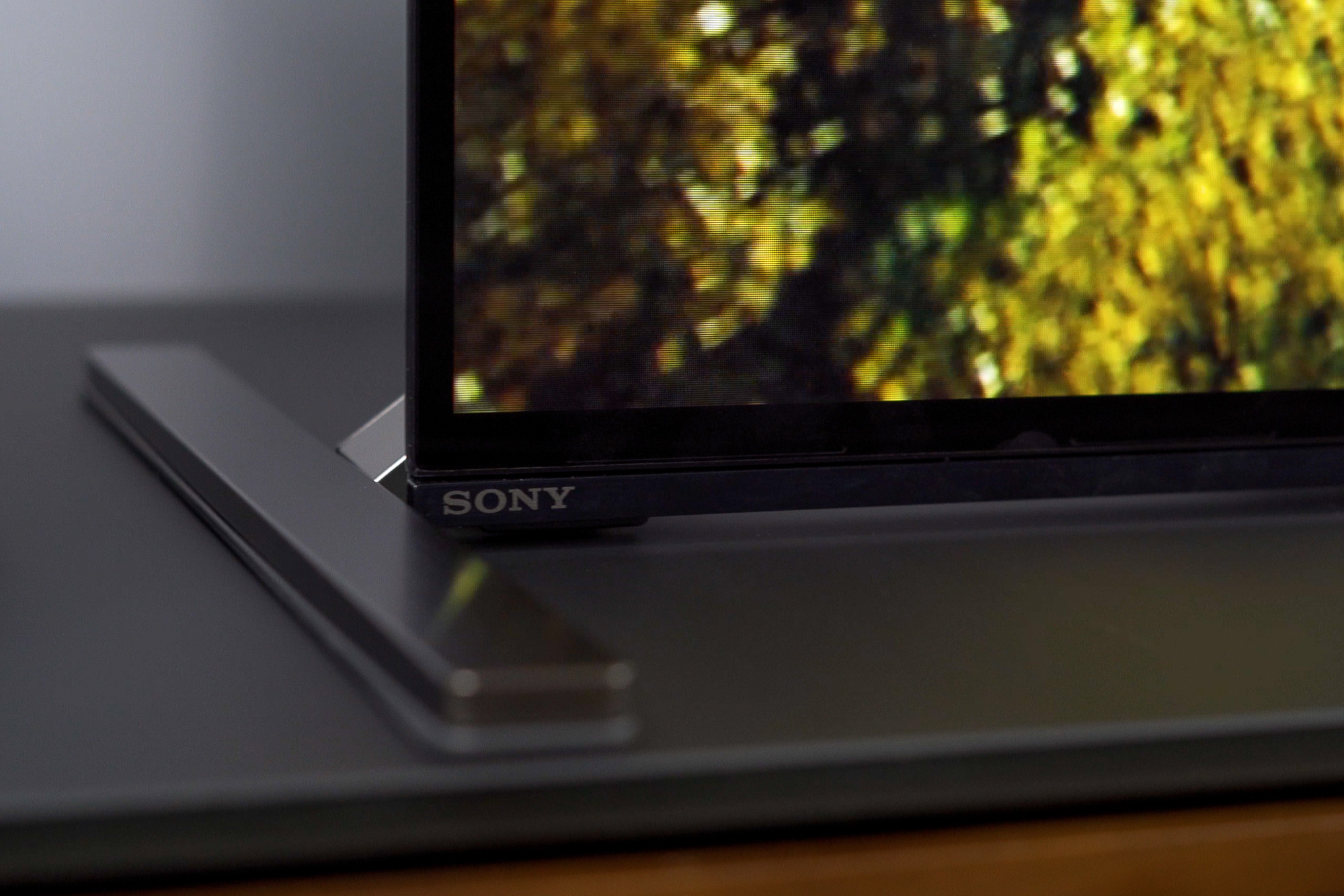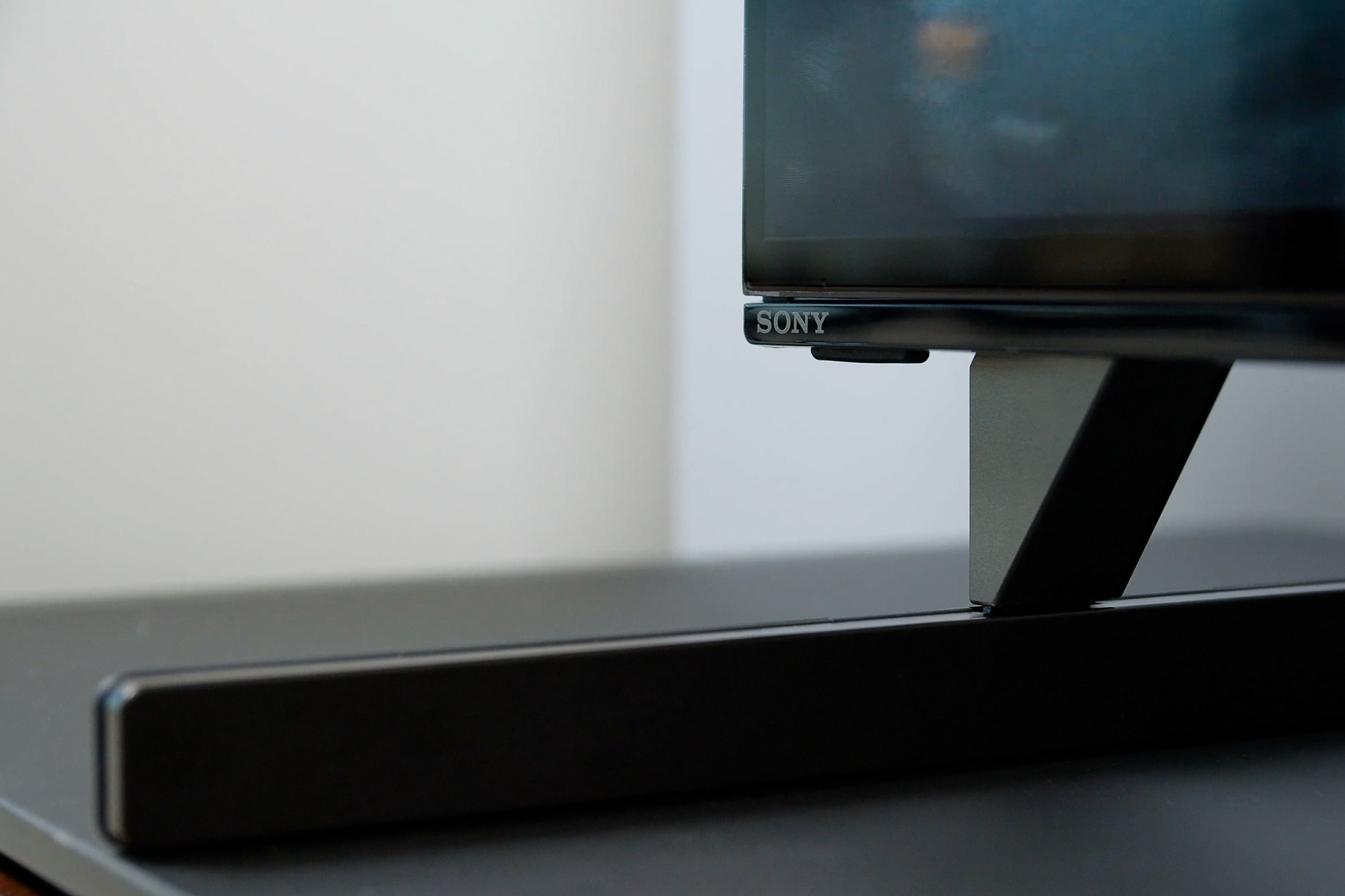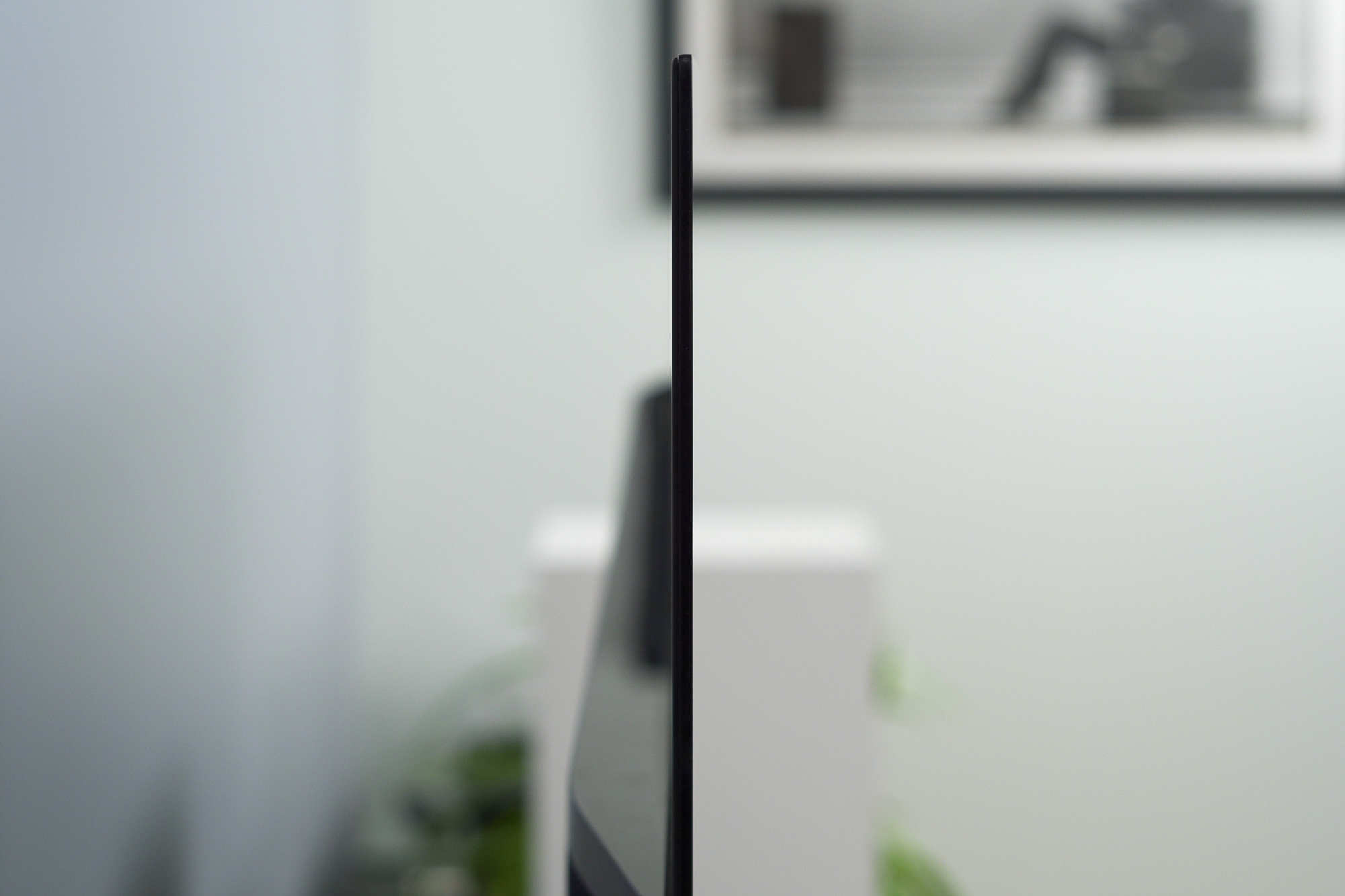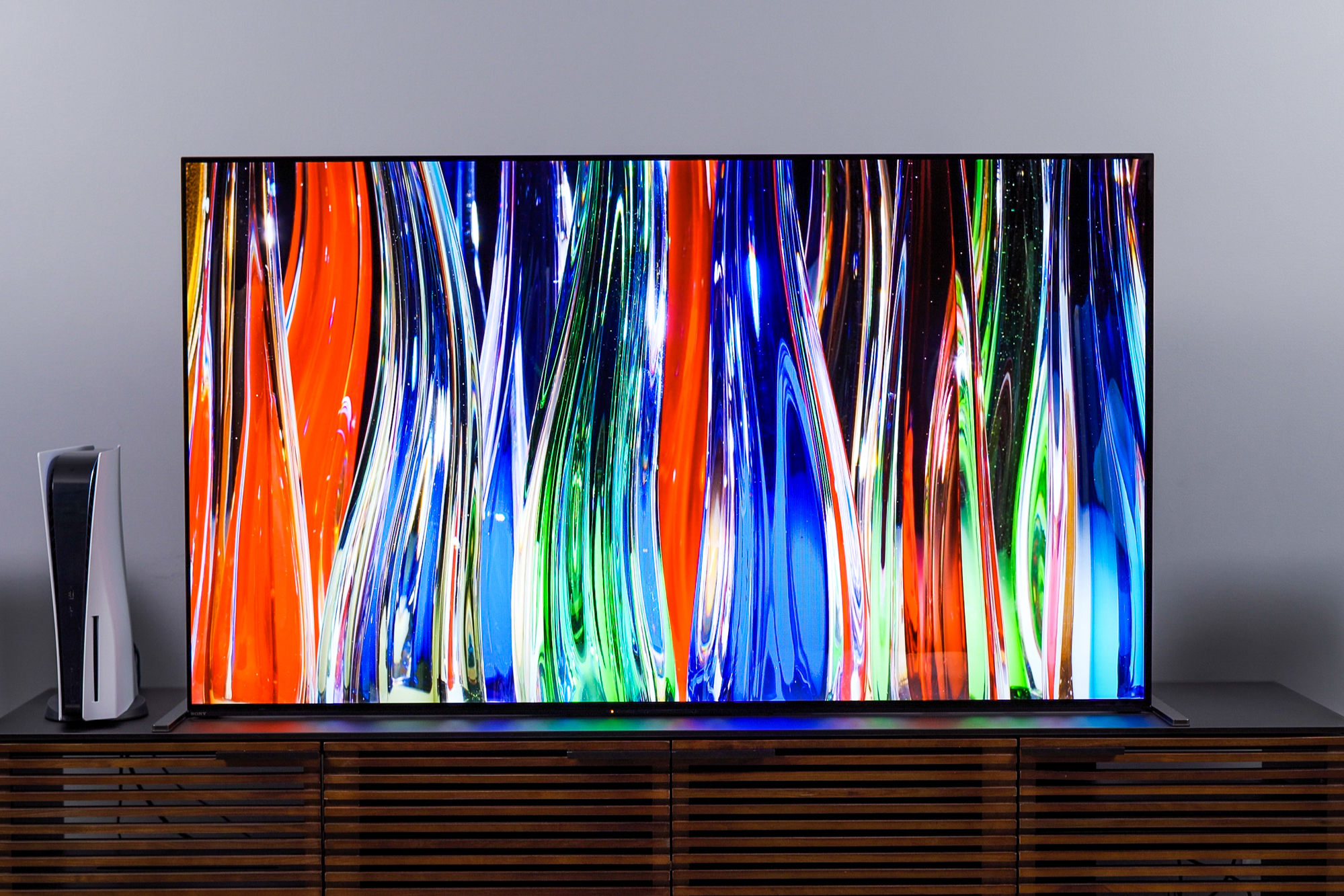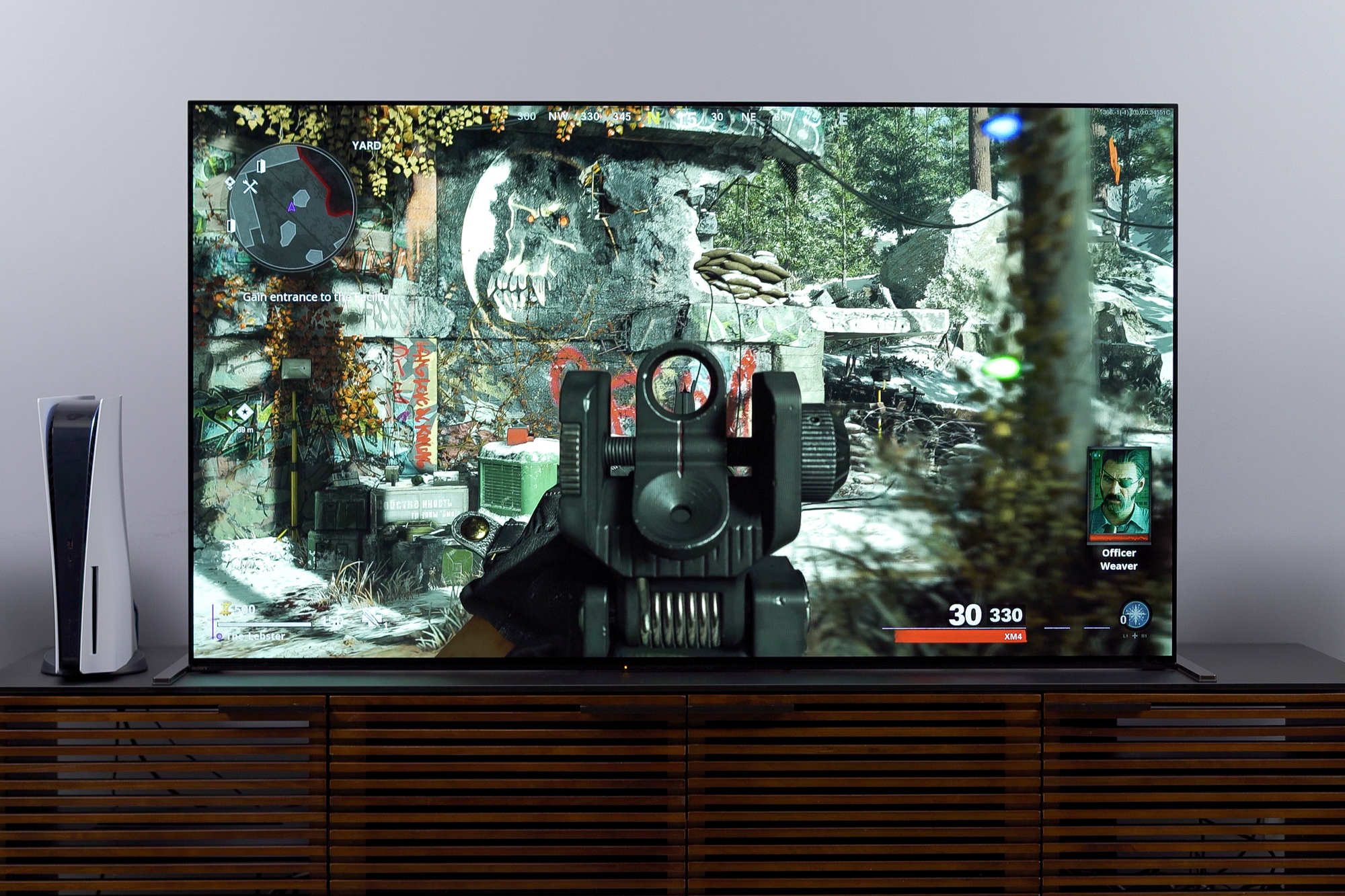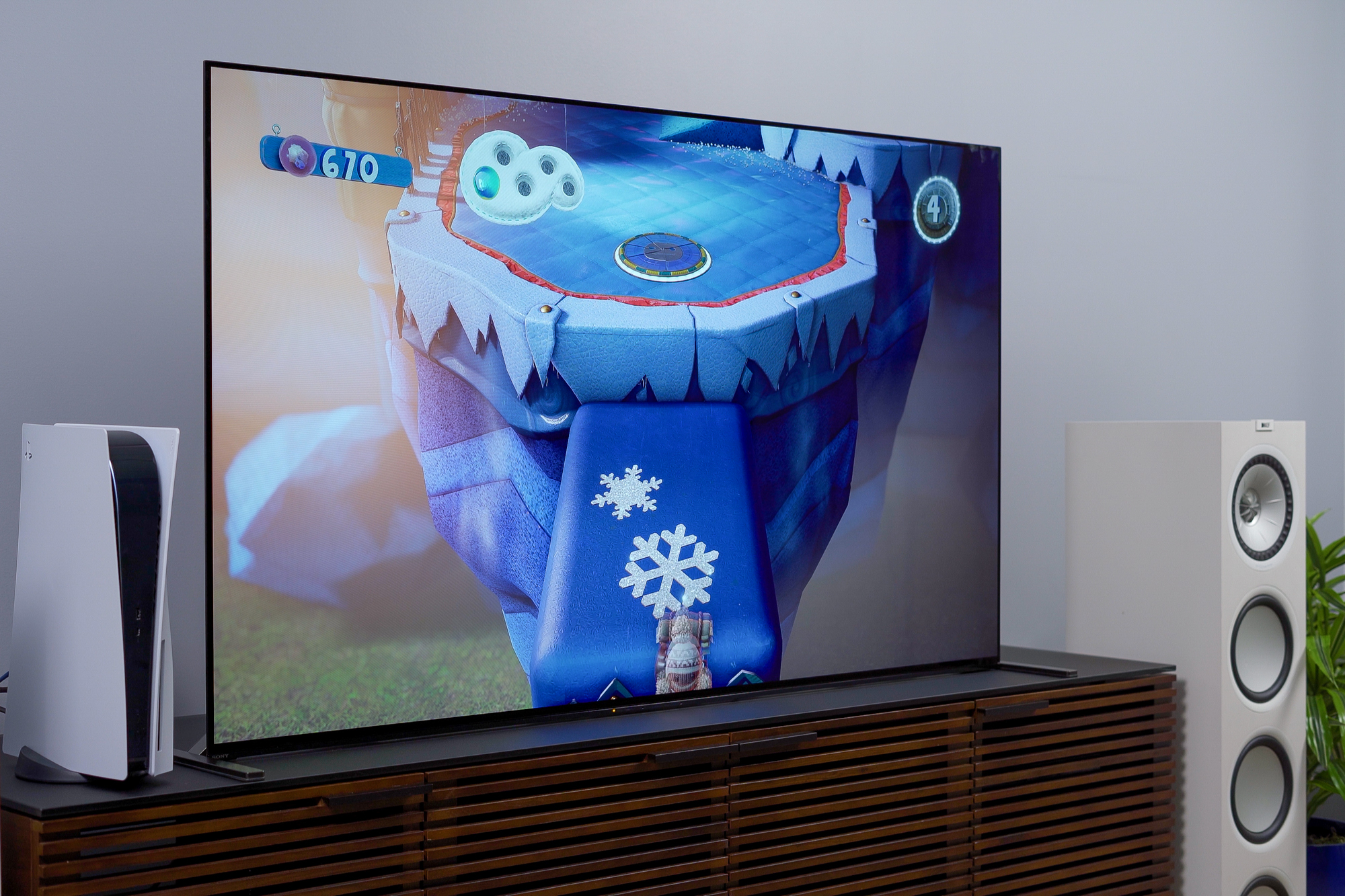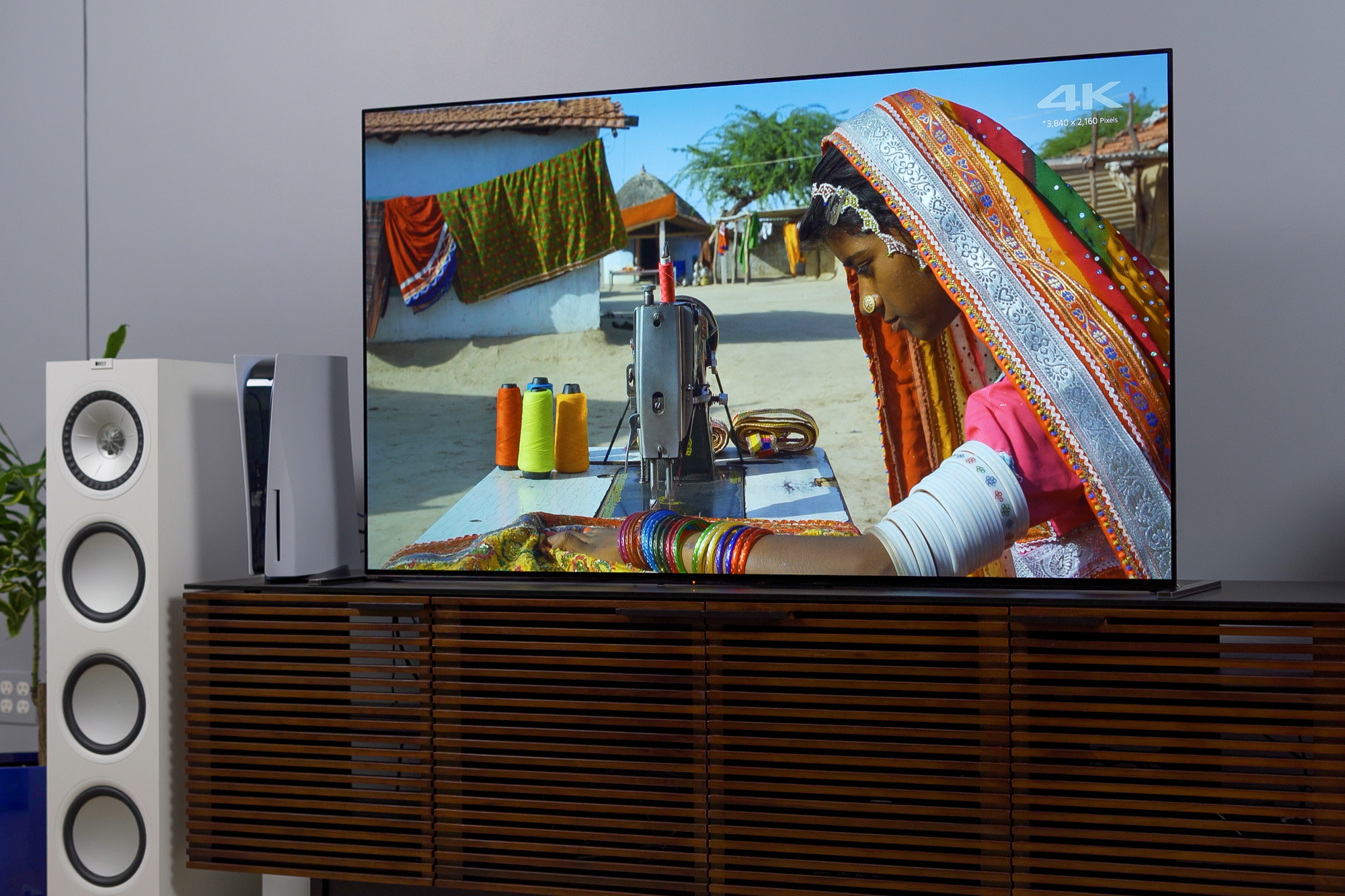“The A90J offers the best picture and sound quality in a TV today.”
- Brightest OLED TV
- Exceptional HDR performance
- Perfect black levels
- Stunning detail
- VRR still missing
Since CES 2021, rumors have swirled around the Sony A90J OLED TV. Promises of a big boost in brightness and a bold new picture processor have had TV geeks like me salivating. The $4,000 question? Is the hype around this TV — some of which I’m responsible for — true? We’re about to find out.
In this review I’m going to discuss what makes the A90J OLED TV so premium, reveal just how bright it really gets and why you may or may NOT want all of that brightness on tap, analyze picture quality, and I’ll dip into gaming features a little as well, all to determine just how great this TV really is, and whether it’s worth saving your pennies — or Benjamins, really — so you can buy it.
Spoiler alert: This TV is superb.
Out of the box

The moment you crack the box, it is immediately apparent the A90J is a premium, luxury product — you can also tell that by that $4,000 price. The good news is the A90J absolutely looks and feels the part of an ultra-premium TV. From its bezel-free borders to its ultra-slim form, right down to the included brushed-metal remote control, you get a sense that you’ve gotten what you paid for with this TV. I experienced zero letdowns in the unboxing process.
One of the things I like most about this TV’s design is its convertible stand. You’ve got three options for leg placement. One allows the TV to sit up a few inches above your media stand, leaving just the right amount of room for a soundbar, which will help hide any unruly cables left due to a disappointing cable management system. The second option inverts the feet so the TV sits flush against your media cabinet, leaving no perceivable gap — the same ultra-slick look found in last year’s Z8H 8K OLED TV. The third option places the legs toward the middle of the TV, allowing a much narrower footprint for smaller media stands.
For those wall-mounting, expect a very clean look with just a slight bump out from the wall. Even with that bump, the TV’s impossibly thin OLED panel continues to draw oohs and aahs.
Sony Bravia XR Master Series A90J details
While we reviewed the 65-inch XR65A90J model, our review also applies to the 55-inch model.
| Screen Size | Model Number | MSRP |
| 55-inch | XR55A90J | $3,000 |
| 65-inch | XR65A90J | $4,000 |
User experience
Setting up the A90J is a snap, especially if you have a Google account and the
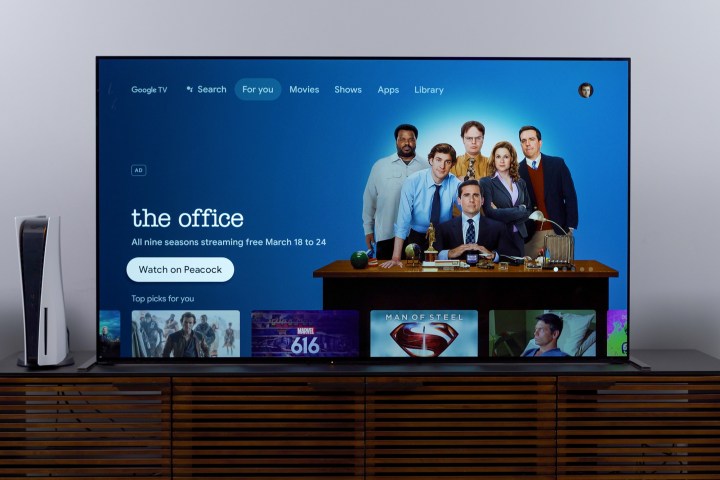
I enjoyed
Bottom line, the TV is a joy to use.
Outside of setup ease,
Bottom line, the TV is a joy to use. Even the settings menu is filled with explanations for what each button and slider will do when adjusted.
Sound quality
Sound quality is not something I usually dwell on in these reviews but, sweet mercy, this TV sounds fantastic.
If you weren’t already aware, Sony places transducers on the back side of the OLED panel which convert the screen into a speaker. This way, sounds come directly from the screen itself, and this system does an incredible job of pinpointing sounds to the on-screen source. For example, if there’s someone on the right hand of the screen speaking, you hear them speaking from where their face appears — as if the actor’s voice is actually coming from their on-screen mouth.
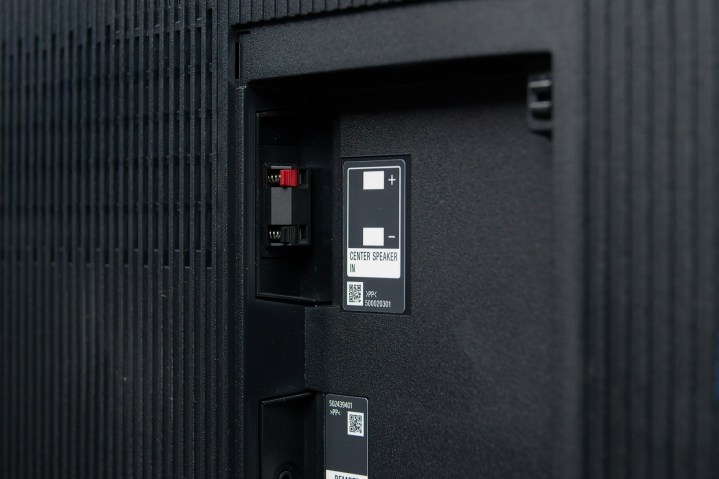
Bass response on the A90J has been improved since Sony first started using this kind of audio solution, implementing an additional bass driver and a labyrinth of bass ports on the back of the TV. I love hearing a TV sound this big. No, it’s not the same as having a dedicated sub, but you will be astonished at how deep and loud the A90J can sound can be when called to be.
I can’t think of another TV that sounds this good.
Also, Sony has pulled some acoustic trickery to enhance the sound field vertically, so it seems that the sound comes from beyond the borders of the TV. In addition, virtual surround effects, which I usually strongly dislike, sound very convincing coming from the A90J. I can’t think of another TV that sounds this good, frankly.
If, however, a more elaborate multispeaker surround system is what you prefer, you can use the TV as your center speaker. Many folks — including other reviewers, it seems — think that the pair of speaker terminals on the back of the TV are for powering a center channel speaker. This isn’t the case — those terminals are actually inputs. The TV is designed to accept a signal from an A/V receiver, down-convert the signal to speaker level, then amplify it through its own speakers, effectively replacing a center channel speaker. And it works fantastically well.
About that brightness
I’m about to get into picture quality, but first, I want to talk about two of the reasons this TV is supposed to be such a big deal this year. One is its brightness potential — possibly the brightest OLED TV made to date. The other is its processing, which is always something we talk about with Sony’s TV’s because processing makes a huge difference in picture quality, and Sony’s has historically been the best.
On the processing front, Sony has gone from Extreme to Ultimate and has now darted in a new direction. This year’s new hotness is what Sony calls its Cognitive Processor XR. The name is a bit of a mouthful, but what it means is that Sony — by its own description — has designed the picture processor to operate similar to the way our brains think and how we perceive things.
Sony says the processor is so advanced that it can take every element of picture quality and cross-reference all of it at the same time, just as our brains do. And the result is meant to be an extremely realistic picture. One of its advantages, for instance, is that the XR processor can recognize that it needs to enhance detail in the fur of an animal, but not necessarily the detail of the blurred out grasslands and trees in the background. I know that sounds like a lot, and I’m sure there is more than a tablespoon of marketing play in there, but Sony has historically delivered on its claims for superior processing, and I can tell you right now, it is indeed delivering with the new XR processor.
As for the A90J’s newly found brightness boost: You may have heard that LG also has a new OLED TV that can get brighter than ever before, and you may think that because Sony gets its OLED panels from LG Display, that they may be playing the same game to become reigning king of brightness. BUT, they aren’t.
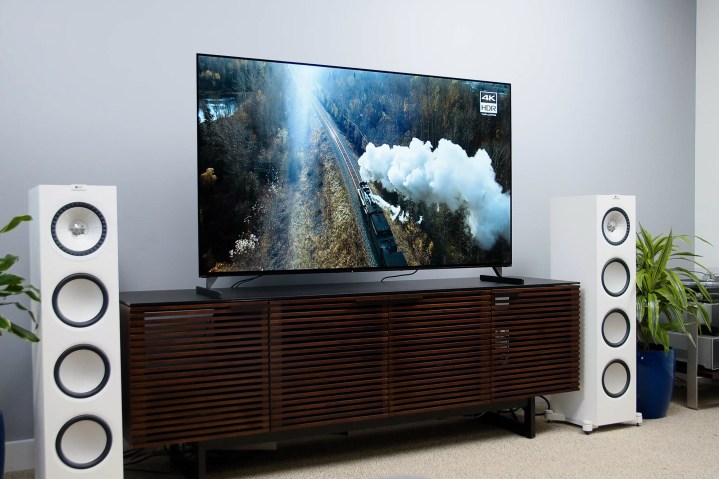
Sony’s approach is different in that while it appears to be using a similar new OLED panel from LG Display — something I haven’t yet confirmed — it has also developed a new heat-sink technology that allows the panel to be driven harder and slightly longer, without doing damage to the pixels or wearing them out prematurely. As a result, the TV has been rumored to be able to hit 1300 nits in Vivid mode — that’s just under twice as bright as previous Sony OLEDs. I’ll talk about whether that kind of brightness is realistic or even desirable in a moment, but first, let me talk about picture settings and some measurements I took while evaluating the TV.
Picture settings/Picture quality
If you want the A90J’s brightest picture while also maintaining some accuracy (adherence to picture standards that Hollywood uses — that is), avoid the Standard or Vivid picture modes. The play is to use the TV’s Custom mode. Once Custom is selected, you want to turn the ambient light sensor off, a setting that is conveniently listed near the brightness settings. Note that turning the sensor off disables other features that adjust the brightness tone curve based on your room lighting, like Dolby Vision IQ. Also under the brightness setting, I suggest turning peak brightness to high. This will brighten up the picture in both SDR and
With those settings, I got 370 nits peak in SDR. I measured the more standard 150 nits with the peak brightness setting at low. Color accuracy in this mode after I reduced the amount of blue going into white was insanely spot-on, with only the most extreme red going over the threshold for perceptible inaccuracy and even then, only barely so. I’m seriously impressed.
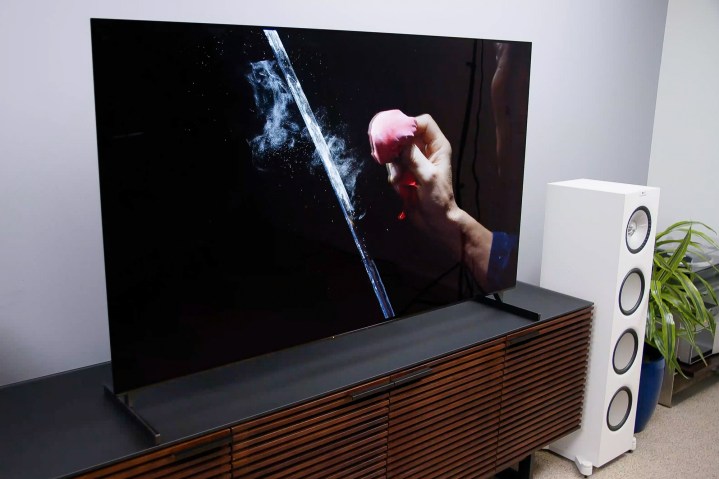
For
Color was very accurate when the peak brightness wasn’t set to high. Slight inaccuracies crept in when the peak brightness was pushed up, which is to be expected. But again, barely perceivable. We’re holding the TV to the highest standards and it gets closer than almost anything I’ve seen, save a reference monitor like Sony’s own BVM X300, which is a ridiculously expensive true RGB OLED mastering monitor that Hollywood uses when mastering movies.
When I went into Vivid mode, I didn’t have to make any adjustments to get 1,250 nits (closer to 1,300, adjusting for light meter inaccuracy), though that number tumbled to 950 or so once the A90J’s auto-brightness limiter kicked in, which is a good thing for keeping those pixels from overheating unnecessarily.

So, there you have it: Confirmation that this TV can indeed get exceedingly bright if you ask it to, no doubt. And a clear indication Sony is taking a different approach from LG.
But how does this powerful brightness translate to real TV viewing? Do you need that much brightness on an OLED TV? I say yes, but with some caveats.
Everything I’ve ever loved about OLED TV picture quality, elevated.
I would never watch a TV in Vivid mode. It looks harsh and artificial. If you needed to go to Vivid while hosting a big sports party and you were watching with daylight streaming into your home, shining directly on the TV, then yes, that kind of brightness comes in handy. But for regular viewing, the Custom or Cinema mode with peak brightness turned up is more than just enjoyable, it is dazzling. That extra bit of brightness, used in the right places, and in the right ways, elevates the entire picture but has an especially beneficial impact on
The A90J is everything I’ve ever loved about OLED TV picture quality, elevated. The accuracy, detail, and richness this TV offers are intense. I absolutely love it. Though I freely admit I have been a Sony fan for some time, this TV is objectively next-level good. Best picture quality I have ever seen. That’s it. I know there are many awesome TVs that will be coming through, but this TV is now the benchmark, and it’s going to be hard to beat.
Gaming
Now, let’s talk about gaming. This TV does have two HDMI 2.1 ports with the potential to support
If, however, you’re going to run the consoles through an HDMI 2.1-friendly A/V receiver that passes
Otherwise, as far as I’ve been able to determine, almost everything seems to be working at launch except VRR — that’s another story. It may be a while before we see a firmware update from Sony that enables VRR on 2021 and select 2020 TVs.
Outside of that, all of the A90J’s picture quality awesomeness firmly applies to games — they look incredible. This TV isn’t as gaming-centric as the LG G1, but that’s a discussion for a versus article that is forthcoming. Watch this space.
My take
Frankly, the A90J is a work of art and a feat of engineering. I absolutely love it. The challenge is its price, but, fortunately, prices go down over time. Price aside, the A90J is one of the finest TVs you can buy in 2021, and perhaps beyond.
Is there a better alternative?
In terms of picture quality and sound quality, no. The LG G1 OLED evo gets extremely close, though, and has the advantage of advanced gaming features and a much lower price at launch.
How long will it last?
The Sony A90J is a remarkably advanced, well-built television. It should last far into the future.
Warranty
Sony offers a one-year parts and labor warranty on its TVs when purchased from an authorized retailer. More information can be found at Sony’s Manual and Warranty page.
Should you buy it?
Yes. It may be expensive, but the A90J offers the best picture and sound quality you can get in a TV today.
Editors' Recommendations
- Best Walmart TV deals: 43-inch 4K TV for $195 and more
- Best Buy TV deals: Save on QLED TVs, OLED TVs, and 8K TVs
- Let’s discuss an Apple TV 4K with a camera
- Best 65-inch TV deals: Get a 65-inch 4K TV for under $400
- Vizio’s first 86-inch 4K TV is coming soon, for $999

